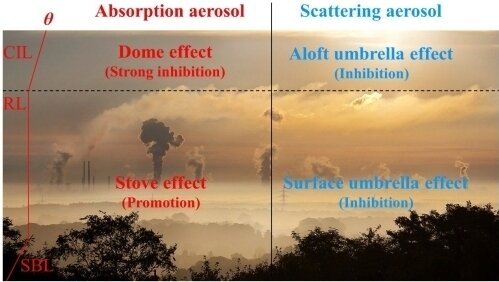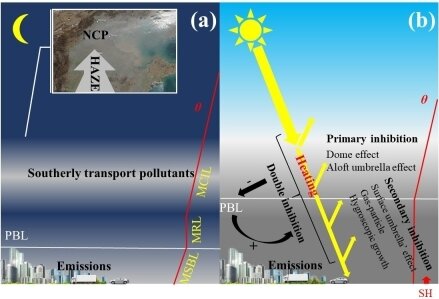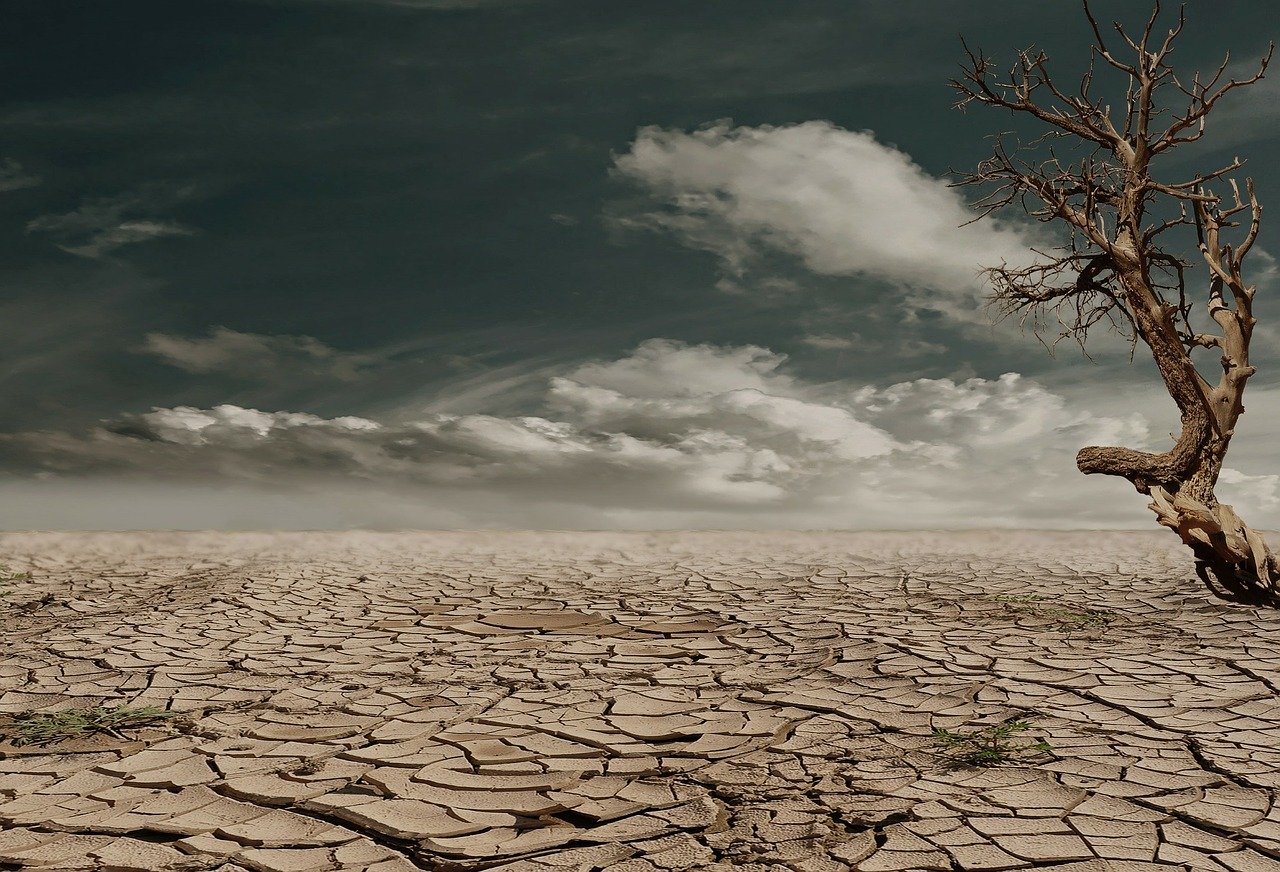The atmospheric planetary boundary layer (PBL), also called the atmospheric boundary layer, is the region of the lower troposphere where Earth’s surface strongly influences temperature, moisture, and wind through the turbulent transfer of air mass. The PBL controls the dispersion of air pollutants, such as atmospheric aerosols, and is closely related to human life.

Previous studies have shown that the positive feedback of aerosol and the PBL is an important factor in haze episodes. However, the role of different types of aerosol (scattering and absorption) in the development of the PBL remains unclear. Prof. Xin Jinyuan from the Institute of Atmospheric Physics (IAP) of the Chinese Academy of Sciences, said:
“We found the aerosol acts sometimes as a stove, a dome, and even an umbrella on the PBL, depending on its optical properties and altitudes.”
In a recently published study in Geophysical Research Letters, Prof. Xin and Prof. Scot T. Martin from Harvard University constructed a model of aerosol stove, dome, and umbrella effects using a large-eddy simulation model incorporated with the observations of a typical stagnant weather day. The PBL is comprised of a bottom-up structure of a near-surface stable boundary layer (SBL), a residual layer (RL), and a capping inversion layer (CIL) during nighttime; and a convection boundary layer (CBL) and a CIL during daytime. Prof Xin said:
“We found that the increase of absorption aerosol concentration below RL strongly heated the lower atmosphere, induced the entrainment, and promoted the PBL development. We call it aerosol stove effect.”
The dome and umbrella effects of aerosols
For the absorption aerosol layer above RL, according to the study, the increased concentration that traps more solar radiation strongly heated the temperature inversion layer. This strengthened the inversion intensity and exhibited a strong inhibition of the PBL. This is called a dome effect since it acts as a lid to impede the development of the PBL. In the cases of purely scattering aerosol, the suppression of PBL depends on loading rather than the height of the layer, so it is like an umbrella that reflects the solar radiation back to the out space.

Results reveal that there exists a transition height, above which absorption dominates the suppression of the PBL (dome effect > aloft umbrella effect) and below which the purely scattering aerosol is more important (surface umbrella effect > stove effect). This transition height is highly related to the RL height. These findings provide scientific references for pollution control strategies. It is necessary to strictly control the burning activities that produce a large amount of absorption pollutants (e.g., black carbon and brown carbon) in the upwind area in the south of the North China Plain (NCP) to avoid the dome effect.
For the local NCP, measures such as vehicle restriction and desulfurization of coal burning should be specially strengthened to reduce the emission of scattering aerosol and its gaseous precursors (e.g., sulfur dioxide and nitric oxide) in order to eliminate the surface umbrella effect.
Provided by: Li Yuan, Chinese Academy of Sciences [Note: Materials may be edited for content and length.]







